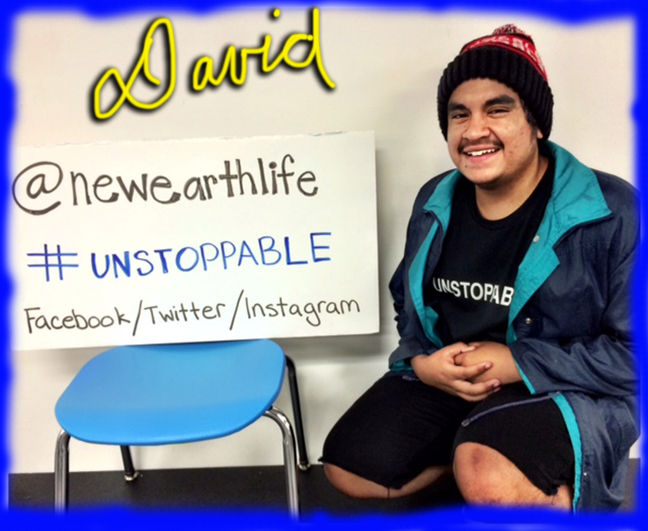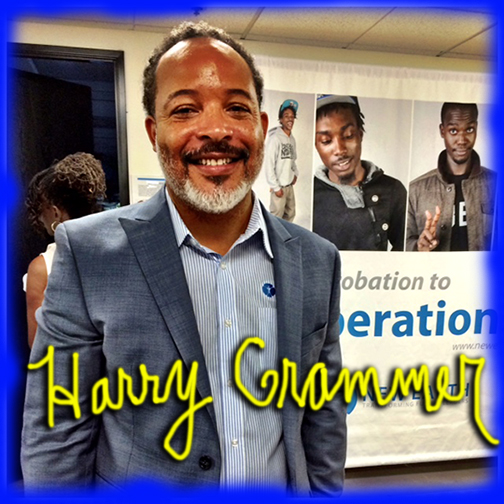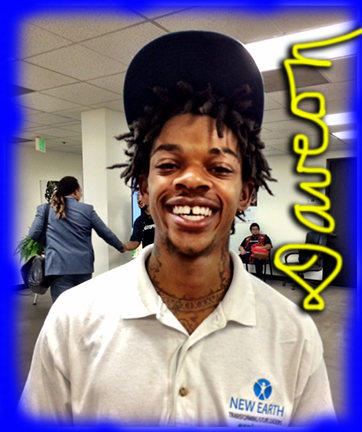“When a friend first told me about this place, I thought it was too good to be true,” said David Moreno, 19, who is one of around 50 young people, ranging in age from 16-25, who are looking to a Los Angeles-based organization called New Earth to help them make up school credits, acquire new skills (like learning to write code), get leads on jobs, find a mentor, and in general, and to get the help they need in order to turn their lives in a new direction.
“Here you feel like they actually care about what happens to you,” David said. “When I first came, they sat me down and helped me make a plan. They asked me about my goals.”
Then the New Earth staff helped him map out the steps it would take to reach those goals.
David has been incarcerated and, in the past, got himself mixed up with a neighborhood gang. Now he’s hoping to go to college to become a marine biologist.
At the moment, however, he’s enjoying the job he has—courtesy of New Earth— running a webcam for Explore.org, a branch of the Annenberg Foundation, which has a network of high-def web cameras streaming live images of wildlife from all over the planet.
This past Friday afternoon, David, along with most of the New Earth students and staff, were present for the opening of the organization’s brand new facility, the New Earth Reentry Center, located in a business park in Culver City.
To celebrate the occasion, most of them wear black t-shirts emblazoned with what seems to have become the center’s motto and rallying cry: UNSTOPPABLE.
LA County Supervisor Mark Ridley-Thomas was there too, wielding a pair of oversized scissors for the official ribbon cutting. “This organization is transformative,” Ridley-Thomas said to the crowd. “It’s going to help heal our community.” New Earth is “not about a whole bunch of talk, it’s about doing what needs to be done.”
According to New Earth’s literature, the new center will act as “an alternative to incarceration for youth aged 13-25, who have been in and out of the system.” (New Earth’s academic program is accredited through a partnership with the John Muir Charter School of California and YouthBuild, which is a national program providing alternatives to incarceration.
Harry Grammer, who founded New Earth in 2003, put it this way. “We are committed to significantly reducing the youth recidivism rate in Los Angeles,” he said.
Grammer is, by his own description, a one-time troubled kid who grew up in Chicago, and got involved with gangs. But Grammer got lucky and encountered some mentors who helped him shift his life’s trajectory. After finishing school, he passed briefly through the corporate world. Then, for the past decade, he has tried to help kids like himself through the use of a cluster of rehabilitative programs that New Earth runs in seven of LA County Probation’s juvenile facilities. But while Grammer has been heartened by the transformations he’s seen kids make when they engage with the New Earth programs inside the camps, too often when those same kids leave juvenile lock-up, they have little or no support and, as a consequence, do poorly and often return.
After going to the funeral of a particularly talented boy who had learned to write moving poetry in a program called F.L.O.W., only to be shot to death after he got home, Grammer decided that great programs in lock-up weren’t enough.
So, in 2013 New Earth began offering post-release programs.
The new center will house an expanded version those programs.
NO URGENCY TO REHABILITATE
“When we worked in the camps,” Grammer told me, “There didn’t seem to be an urgency to rehabilitate,” he said. “It was more about sedation”—keeping the kids in line and out of trouble. And while some of the staff at the camps seemed to genuinely care about the kids in their care, he said, too many seemed to view themselves primarily as law enforcement, not mentors. “They’d say, ‘I’m a case worker, not a social worker.’
“But case workers aren’t what kids need.”
To make matters worse, when the youth come out of camp, Grammer said follow-up is often minimal. “This week alone,” he said, “I know of three young men who are being dropped off at shelters when they leave camp.” It should not be a surprise, he said, that—seeing few alternatives—such kids often reach for the solutions that are familiar to them. Too often that means selling drugs.
“You know what kids call drugs now?” Grammer asked? “’Work.’ They’ll say, ‘Do you have work?’ meaning, ‘Do you have drugs for me to sell?’”
Grammer intends to take those same kids and teach them tech skills “because we have Silicon Beach right up the street from us.” And in addition to its educational and jobs program, he believes the center can act as “a safe haven where kids can stir their creative imagination and develop a perspective for their lives.”
So far the plan seems to be working. In addition to the classes New Earth offers, Daveon Davis, 20—who wants to be an engineer– got help in getting his juvenile record cleared so it wouldn’t stand in his way of finding a job. As a consequence, like David, he’s now working as webcam operator for Explore, a position that he says has given him a new sense of stability.
“When I first came here my mom and sister and I were losing our house,” he said. But after New Earth helped him get the job, he was able to rent an affordable apartment for himself and his family. “I’ve been paying the rent for a year and four months now. Still to this day, I’m able to pay,” Daveon said, his voice filled with pride, his smile suddenly dazzling.



